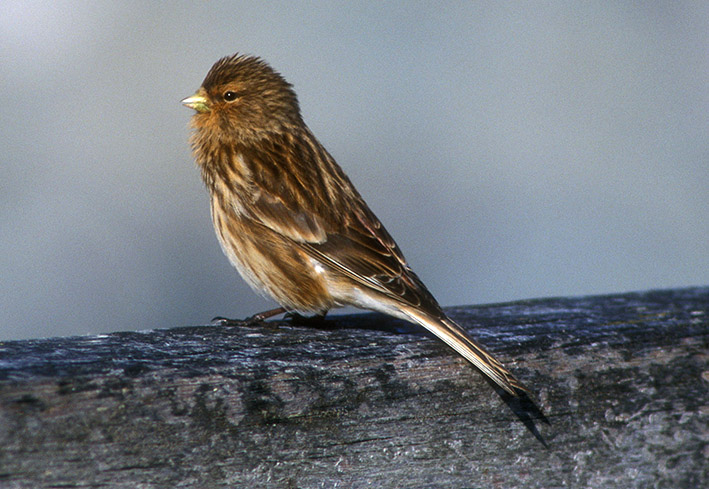WITH finches on the move in winter, many lowland and coastal birders anticipate the appearance of Twite, either among their local Linnet flocks or in tight little single-species groups. However, Twite is not an easy identification, especially in flight and mixed in with a finch flock, and is commonly confused with the more familiar Linnet, particularly with juveniles of that species.
Twite is a heavily streaked medium-sized finch, with a profusion of mantle, flank and breast streaks making it appear sometimes darker than Linnet, in which the juvenile is also streaked on the flanks and breasts. However, Twite always has a more buff tone on the foreparts and lacks Linnet’s grey tones to the head and beak; the bill of Twite in winter is a pale, dark-tipped horn-yellow colour. Linnet has a mostly unstreaked mantle and back, and pale centres to its greater coverts, which are dark brown in Twite. The tips of these latter feathers are also paler in Twite, giving the species a double-barred effect on the closed wing.
Twite’s tail is longer, with a deeper fork and this, along with its smaller head and thicker feathering, gives the species a different, slightly bulkier jizz than its commoner relative. Twite has a bolder whitish wing-bar than Linnet’s less clear buff version, and in flight and on the ground, it shows an obvious pink rump, though this is absent in the female, which has a streaked rump.
Flying birds in Linnet flocks are usually located by their distinctive loud and ascending tveeeiitt call.

Twite (Llanfairfechan, Conwy, March 2002). Note the uniformly streaky
brown front end, pale yellow bill and long, deeply forked tail.
Photo by Steve Young (www.birdsonfilm.com).

.jpg?&width=640&height=480&bgcolor=ffffff&mode=crop&scale=canvas&format=webp&webp.quality=85)
